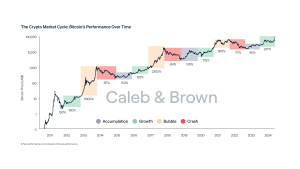Bitcoin Diamond: A Deep Dive into the Hard Fork and its Impact
Dive into Bitcoin Diamond, the improved Bitcoin fork offering faster transactions and enhanced scalability. Explore its unique features and discover why it’s gaining traction in the crypto world. Learn more about BCD today!
Bitcoin Diamond, or BCD, emerged as a fork of the Bitcoin blockchain in November 2017. This hard fork aimed to address perceived limitations in Bitcoin’s scalability and transaction speed. The project proposed several improvements, including a modified mining algorithm and an enhanced transaction confirmation process. Its goal was to create a more efficient and accessible cryptocurrency for a wider range of users.
Understanding the Bitcoin Diamond Hard Fork
Hard forks, in the context of cryptocurrencies, represent a significant change to the underlying code of a blockchain. This change creates a new, independent blockchain, distinct from the original. In the case of Bitcoin Diamond, the hard fork resulted in the creation of two separate blockchains: the original Bitcoin blockchain and the new Bitcoin Diamond blockchain. Existing Bitcoin holders received an equivalent amount of BCD tokens, reflecting their Bitcoin holdings at the time of the fork. This distribution was not without controversy, however, as some members of the community questioned the legitimacy and value proposition of the new currency.
The Technical Aspects of the BCD Fork
The Bitcoin Diamond hard fork implemented several key changes. One notable alteration was the switch to the X11 mining algorithm. Unlike Bitcoin’s SHA-256 algorithm, X11 is designed to be more resistant to ASIC mining, potentially leading to a more decentralized network. This was a central point in the Bitcoin Diamond whitepaper, which aimed to create a fairer distribution of mining rewards. Furthermore, the block size was increased to improve transaction throughput, a major point of contention within the Bitcoin community at the time. These technical improvements were intended to enhance the scalability and efficiency of the cryptocurrency, making it a more viable alternative for everyday transactions.
BCD’s Features and Advantages
Proponents of Bitcoin Diamond highlight several advantages over Bitcoin. The claimed faster transaction speeds and lower transaction fees were designed to make it more attractive for everyday use. The shift to the X11 algorithm was also touted as promoting a more decentralized mining network, reducing the influence of large mining pools. However, it’s crucial to acknowledge that these advantages are relative and heavily depend on network conditions and adoption rates. The reality is that BCD has not achieved widespread adoption, and the purported advantages haven’t always translated into tangible benefits for users.
- Faster Transaction Speeds: While initially advertised as significantly faster, actual transaction speeds have varied.
- Lower Transaction Fees: Compared to Bitcoin at peak congestion, BCD transaction fees have been lower, but this is also subject to network activity.
- Increased Block Size: The larger block size theoretically allows for more transactions per block.
- X11 Mining Algorithm: Intended to increase decentralization, but its effect has been debated.
Challenges and Criticisms Faced by Bitcoin Diamond
Despite its initial promise, Bitcoin Diamond has faced several significant challenges. The lack of widespread adoption has hindered its growth and utility. Many cryptocurrency enthusiasts remain skeptical of hard forks, viewing them as potentially diluting the value of the original cryptocurrency. Security concerns, while not specific to BCD, are always a factor in the volatile world of cryptocurrencies. Furthermore, the project’s overall development and community engagement have been less robust compared to established cryptocurrencies.
The Issue of Decentralization
While the X11 algorithm aimed to enhance decentralization, the reality has been more nuanced. While it did initially reduce the dominance of ASIC miners, the concentration of mining power has shifted over time, demonstrating the inherent challenges in maintaining true decentralization in any cryptocurrency.
Market Volatility and Price Fluctuations
Like all cryptocurrencies, Bitcoin Diamond’s price has experienced significant volatility. Its market capitalization is considerably smaller than Bitcoin’s, making it more susceptible to price swings driven by market sentiment and speculation. This inherent volatility presents a significant risk for investors.
Mining Bitcoin Diamond
Mining Bitcoin Diamond involves using computing power to solve complex cryptographic puzzles and validate transactions on the blockchain. The X11 algorithm, used by BCD, is designed to be less ASIC-dominant than the SHA-256 algorithm used by Bitcoin. However, specialized mining hardware still offers a significant advantage. The profitability of mining BCD, like any cryptocurrency, depends on several factors, including the price of BCD, the difficulty of mining, and the cost of electricity.
Choosing Mining Hardware
While ASIC miners can be more efficient for mining BCD, the relative lack of widespread adoption means that the ROI (Return on Investment) on expensive ASICs may be questionable. GPU mining could be a more accessible entry point, although the profitability is heavily influenced by fluctuating network difficulty and BCD’s price.
Bitcoin Diamond’s Future Prospects
The future of Bitcoin Diamond is uncertain. Its success hinges on several factors, including increased adoption, improved security, and continued development of its underlying technology. The cryptocurrency market is highly competitive, and Bitcoin Diamond faces strong competition from established and emerging cryptocurrencies. Sustained community engagement and innovative improvements will be crucial for its long-term viability. The lack of significant development updates and community activity since its inception suggests a relatively low chance of significant growth.
- Increased Adoption: Widespread adoption is key to increasing the value and utility of BCD.
- Technological Advancements: Continued development and innovation are vital for competitiveness.
- Community Engagement: A vibrant and active community is essential for long-term sustainability.
- Enhanced Security: Robust security measures are crucial to maintaining user trust.
Investing in Bitcoin Diamond: Risks and Considerations
Investing in Bitcoin Diamond, or any cryptocurrency, involves significant risk. The cryptocurrency market is highly volatile, and prices can fluctuate dramatically in short periods. There is a potential for complete loss of investment. Before investing in BCD, it’s crucial to conduct thorough research, understand the risks involved, and only invest what you can afford to lose. Diversification across different asset classes is always a recommended approach for managing investment risk.
Furthermore, regulatory uncertainty surrounding cryptocurrencies adds another layer of risk. Government regulations can significantly impact the value and legality of cryptocurrencies, including Bitcoin Diamond. Staying informed about regulatory developments is essential for any investor in this space. It’s also crucial to be wary of scams and fraudulent activities that are prevalent within the cryptocurrency market. Due diligence is paramount when considering any cryptocurrency investment.







